Almost everything Republicans get wrong about the economy started with a cocktail napkin in 1974
The sealing of America’s fiscal fate began in 1974, over cocktails.
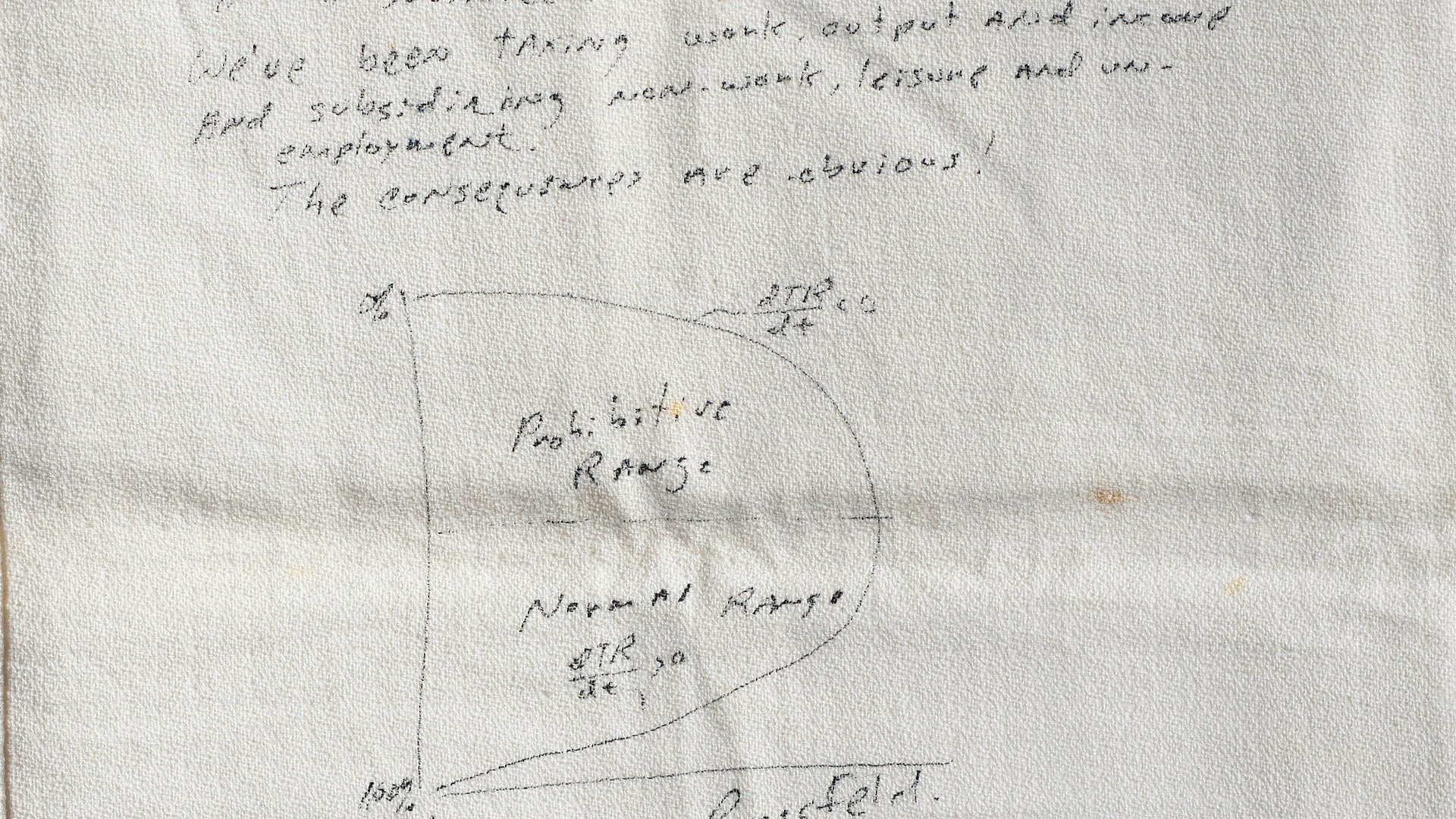

The sealing of America’s fiscal fate began in 1974, over cocktails.
As afternoon faded to evening on December 4, Dick Cheney and a young economist named Art Laffer shuffled into a booth at the Two Continents restaurant in the iconic Hotel Washington—it had appeared in scenes from the Godfather II just months earlier—two blocks from the US Treasury department. Cheney was US president Gerald Ford’s deputy chief of staff. He and his boss, Donald Rumsfeld, were looking for alternatives to Ford’s plan to raise taxes 5%. Raising taxes was a bad idea, said Laffer. If Ford really wanted to spur economic growth, and therefore government revenue, he should cut tax rates.
Cheney wasn’t following. So Laffer grabbed a napkin, uncapped a Sharpie, and drew two perpendicular lines and a blimp-shaped curve, halved by a faint dotted line. With the tax rate on the y-axis and tax revenue on the x-axis, the chart showed that, except at its bend, there were always two points on the curve that generated the same amount of government funds: a higher rate on a smaller base of economic activity, and a lower rate on a larger base of economic activity.
“The conventional wisdom was: You want more revenue, you raise taxes,” Cheney recalled 30 years later, in a Bloomberg interview reenacting that landmark 1974 meeting. “What Art brought to the table with these curves is that if you wanted more revenue, you were better off if you lowered taxes, to stimulate economic growth and economic activity.”
This moment remains one of the most famous legends of modern economic history. Its message—that tax cuts pay for themselves—endures too. (Look no further than president Donald Trump’s budget plan for proof.)
This is even more remarkable when you consider that, except in its very vague suggestion that tax rates alone do not dictate tax revenue, Laffer’s curve is wrong.
Laffer’s curvy logic
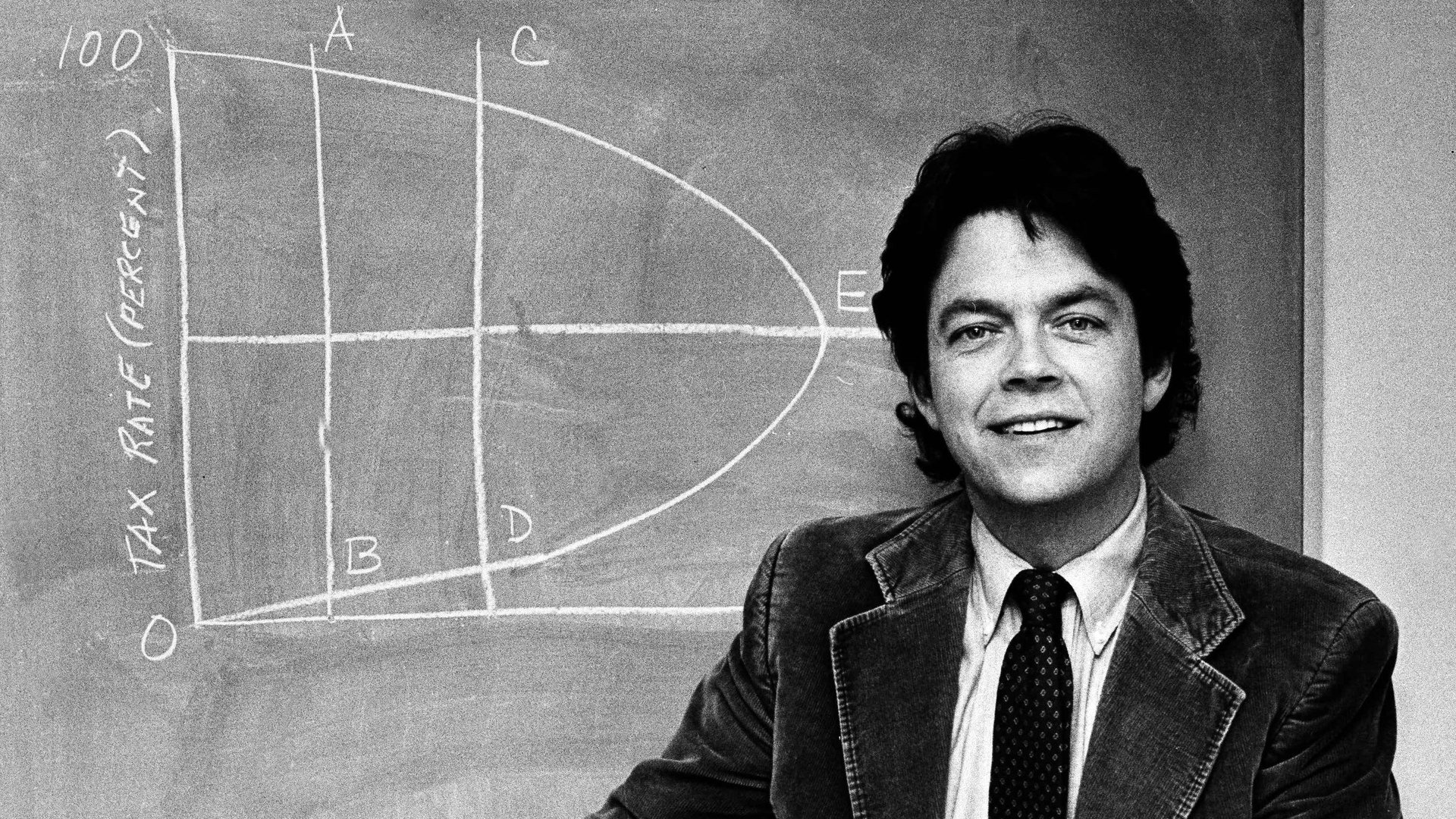
Growth, argued Laffer, depends on how much people work and how much businesses invest. He believed both those things hinge on tax rates: the more income the government takes away in taxes, the less motivated people are to work and save (leaving businesses less money to invest).
The government that thinks that raising taxes is necessary to pay for social programs and other public services is short-changing itself, argued Laffer. When tax rates are too high—in the “prohibitive range” of his chart—people work less and businesses invest less, stifling growth and shrinking the total amount of income available for the government to tax.
“We’ve been taxing work, output and income and subsidizing non-work, leisure and un-employment,” Laffer scribbled above his napkin chart, dedicating the napkin to Cheney’s then boss at the White House, Donald Rumsfeld. “The consequences are obvious!”
By letting people keep more of their earnings—encouraging work and investment—tax cuts fire up enterprise, he argues. The growth that results broadens the country’s overall income so much that, paradoxically, the government can bring in even more revenue just by taxing at a lower rate.
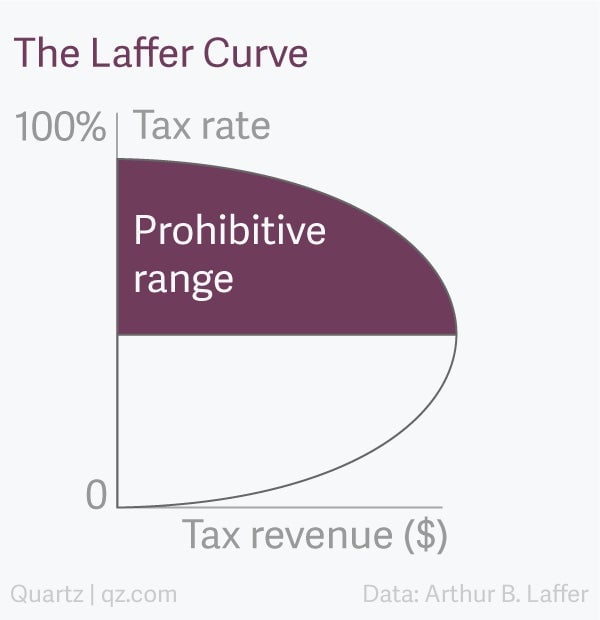
The problem is, this tidy arc of cause and consequence doesn’t exist in the real world. Sure, extremely high tax rates douse economic activity. But there’s no reason to assume the relationship between tax revenue and tax rates is perfectly U-shaped. And the equilibrium point at which a government collects the most revenue possible without dragging down the economy is impossible to know—and varies by country. There was no reason in 1974—or, for that matter, now—to think the US was on the curve’s ”prohibitive” half (many economists put the inflection point for the highest marginal tax rate at around 70%). In fact, without detailed data, you can’t tell where on Laffer’s curve (or non-curve) you are at all.
Laffer’s general idea of supply-side stimulus can sometimes work. Cutting tax rates that primarily benefit rich people shifts wealth from the middle classes to the rich. That might sound unfair, but in developing countries where there’s not enough money to fund the investment needed to spur growth, a Laffer-style policy could (temporarily) help stimulate economic expansion by channelling wealth to potential investors.
But this scenario is not applicable to the US. Private investment tends to ebb and flow with the business cycle; when demand is feeble, so is investment. Cutting taxes on America’s rich isn’t going to encourage them to invest more—they already have plenty to spend and aren’t spending it. Worse, by shifting wealth from middle class families to the moneyed few—a group that is able to consume far less than the working masses—this sort of policy suppresses consumption, which in turn discourages investment in productive businesses. Slowing demand drags on growth, causing debt and unemployment to rise.
The Laffer curve’s strange, seductive power

By 1977, Laffer’s idea was emerging as the core tenet of the increasingly popular “supply-side economics.” At a time when stagflation was suffocating the US economy, and Watergate had sullied the Republican Party, Laffer’s logic offered the GOP an upbeat and understandable plan of action to give to constituents.
“It has been said that the popularity of the Laffer curve is due to the fact that you can explain it to a congressman in six minutes and he can talk about it for six months,” economist Hal Varian once mused.
Even in the late 1970s, most economists disagreed with Laffer’s assertion that the US was in the “prohibitive” range of the curve. But Laffer’s imagery overpowered the arguments of his critics. ”To most quantitatively-inclined people unfamiliar with economics, [Laffer’s] explanation of economic inefficiency was a striking concept, contagious enough to go viral,” says economist Robert Shiller, who studied the concept’s persistent popularity in a recent paper (pdf).
But the idea of tax-cutting your way to faster growth might still have slipped into obscurity if not for Jude Wanniski, a Wall Street Journal editorial writer and long-time Laffer disciple—who just so happened to be the other guy at the Two Continents table alongside Dick Cheney.
Wanniski named the image on the napkin the “Laffer curve”—a term he would also use in his seminal 1978 treatise on supply-side economics, The Way the World Works. Wanniski’s dramatic retelling of the serendipitous exchange between Laffer and Cheney propelled the Laffer curve into the national spotlight—and caught the eye of Ronald Reagan.
Mind you, Reagan wasn’t exactly a hard sell. In fact, the former California governor saw himself as a living testament to the Laffer curve’s logic. As a B-list Hollywood movie star during the 1940s, Reagan faced the exorbitant tax rate of 91% (rates had been hiked to fund America’s war effort). “You could only make four pictures and then you were in the top bracket. So we all quit working after four pictures and went off to the country,” Reagan once remarked.
Laffer’s supply-side logic served as the intellectual cornerstone for Reagan’s tax cuts, marking a turning point in conservative ideology. Up until this point, Republican orthodoxy was mostly focused on avoiding fiscal deficits. The GOP was even fine with raising taxes as long as the government covered its expenses. Economists and liberal politicians saw tax cuts as a way to tuck some extra cash into workers’ pockets, encouraging them to consume—which, in turn, boosted growth. But many old-school Republicans scoffed at Laffer’s trickle-down theories. The most famous example of this came during the GOP primary, when George H.W. Bush dubbed Reagan’s supply-side ideology “voodoo economics.”
Reagan persevered, however, and one of his first priorities as president was putting Laffer’s ideas into practice. Shortly after taking office, Reagan and Congress macheted the US tax code, bringing the top marginal tax rate to 28%, down from 70%, and slashing corporate and capital gains taxes. Higher growth was supposed to expand the tax base, compensating the federal government for the revenues lost by the lower rate. Instead, public debt exploded—and continued to grow throughout Reagan’s tenure. The Laffer curve had just failed its first big test.
The party of growth
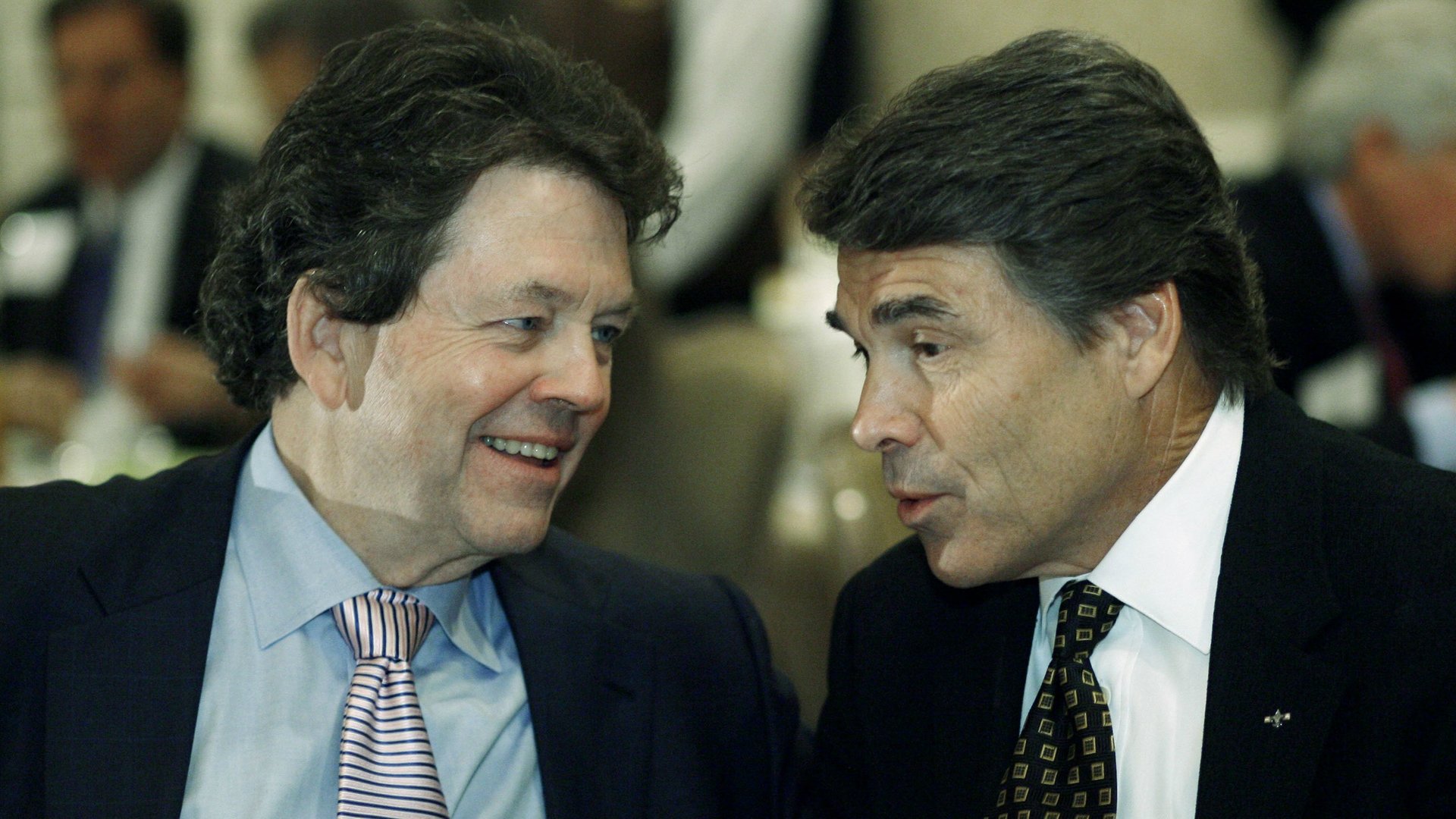
Despite the Laffer curve’s 1980s flop, Republicans have steadfastly refused to give up on the theory. If anything, Laffer’s theory seems to have become more popular among GOP candidates.
In 2004, president George W. Bush claimed his sweeping tax cuts would grow the economy and boosted tax receipts. Instead, tax revenue shrank. Undeterred, Republican candidates in the 2012 presidential election fawned over Laffer’s ideas (Michele Bachmann declared herself an “Art Laffer fiend“). In the run-up to the 2016 Republican primaries, Laffer was once again everyone’s go-to econ guy; on one particular Friday in April 2015, the economist chatted with Rick Perry at 10am, Ben Carson at noon, Jeb Bush at 1.15pm, Bobby Jindal at 5, and closing out the day dining with Ted Cruz, reported the Washington Post.
President Donald Trump also consulted with Laffer during the 2016 race. “My tax cut is the biggest since Ronald Reagan,” Trump had crowed during his campaign.
And with the debut of his new tax plan yesterday, we can see Laffer curve principles once again in action. The president plans to pay for huge tax cuts for the rich with the growth these tax breaks will supposedly stimulate, even though history has shown time and again that swelling debt is the far more likely outcome.
The myth lives on
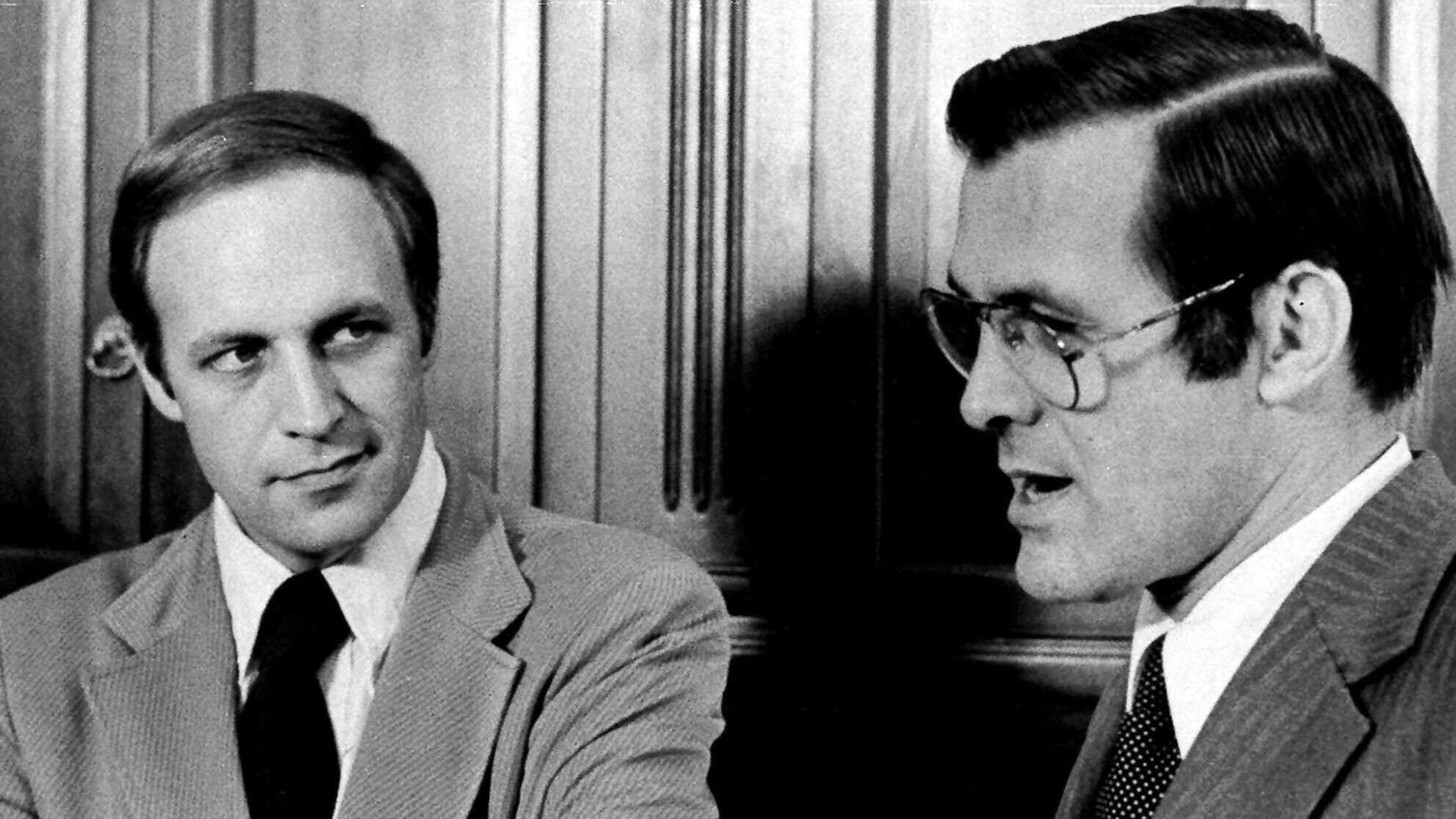
If the last four decades left any doubt that narrative is more powerful than fact, the last four months have surely confirmed it. So it makes a certain kind of sense that the idea of a man whose ”genius was in narratives, not data collection,” as Shiller put it, is shaping policy once again.
Tellingly, even in a narrative as compelling as the Laffer curve creation myth, it doesn’t seem to matter that the facts don’t really line up.
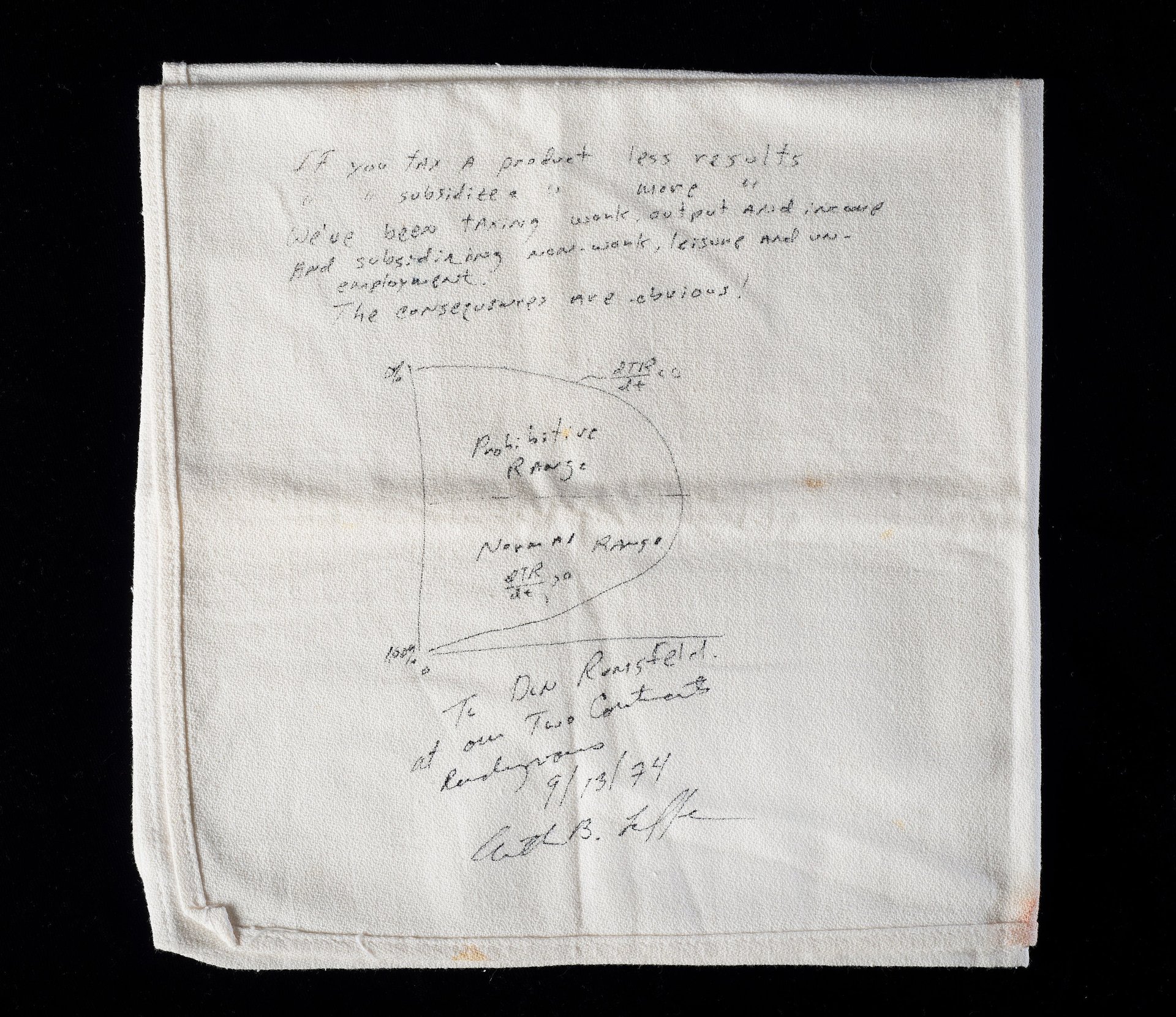
Here’s Cheney in 2014, reminiscing about the pivotal scribble in a Bloomberg video:
I remember a white tablecloth and white linen napkins because that’s what [Laffer] drew the curve on. It was just one of those events that stuck in my mind, because it’s not every day you see somebody whip out a Sharpie and mark up the cloth napkin at the dinner table. I remember it well, because I can’t recall anybody else drawing on a cloth napkin.
Laffer himself doesn’t recall the episode at all. ”I personally don’t remember the details of that evening we all spent together, but Wanniski’s version could well be true,” wrote Laffer on page 291 of his 2010 book Return to Prosperity (which, incidentally, he co-wrote with one-time Trump economic adviser Stephen Moore).
“My only reservation about Wanniski’s version of the story concerns the fact that the restaurant used cloth napkins and my mother had raised me not to desecrate nice things,” wrote Laffer. “Ah well, that’s my story and I’m sticking to it.”
That’s not quite right, though. Wanniski has always maintained the napkin was a paper cocktail napkin. This is particularly odd because after pocketing it as a souvenir on that fateful night, Wanniski donated the mythic Laffer curve napkin to the National Museum of American History. That napkin is cloth, however, not paper. Stranger still, beneath the curve, Laffer wrote, “To Don Rumsfeld, at our Two Continents Rendezvous,” even though Wanniski insists Rumsfeld wasn’t at the Two Continents that night (Laffer, however, says Rumsfeld was present). Even more puzzlingly, Laffer dated the napkin September 13, 1974—two and a half months before the December meeting that Cheney and Wanniski remember so clearly.
Could this legendary event have taken place twice? Quartz asked Rowena Itchon of the Laffer Center about the discrepancy. “Dr. Laffer drew on napkins when he had lunch with many people,” she said.